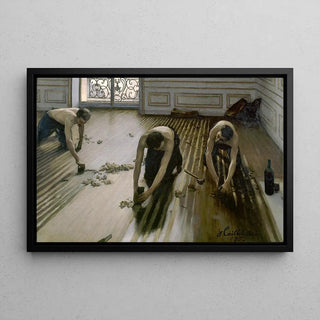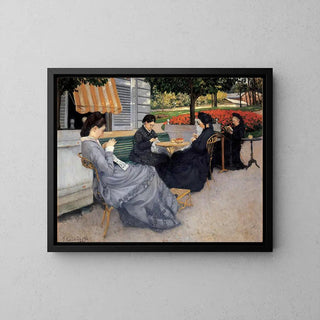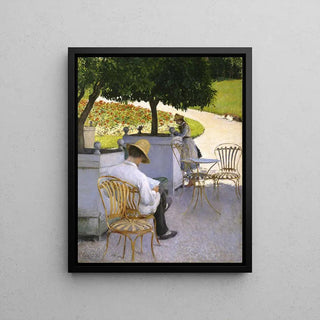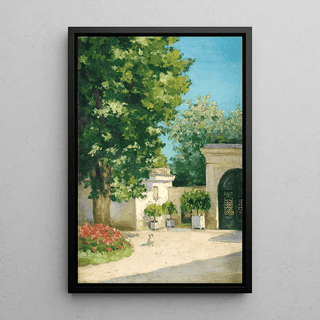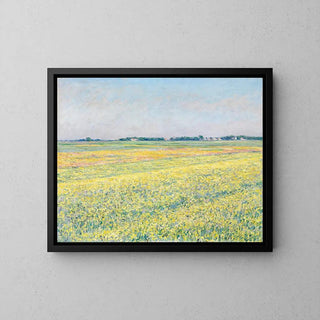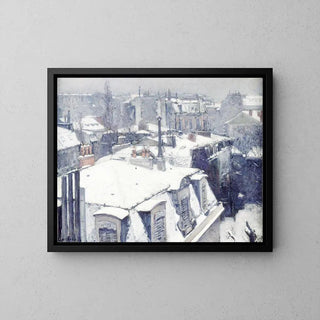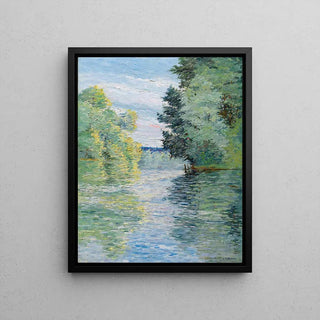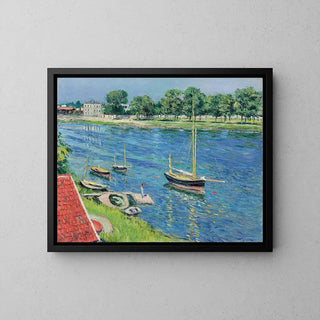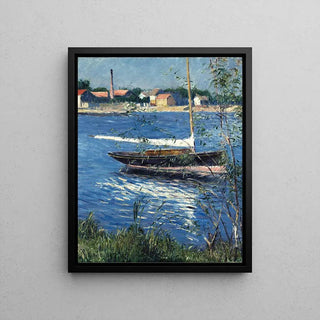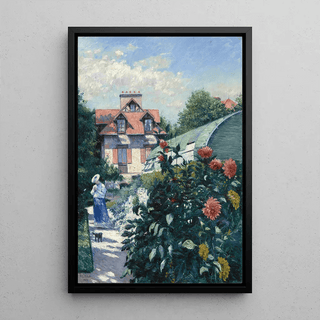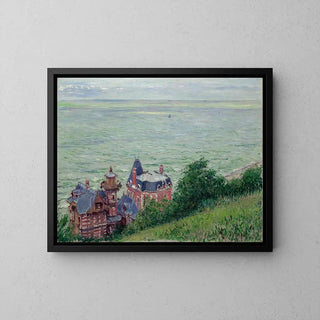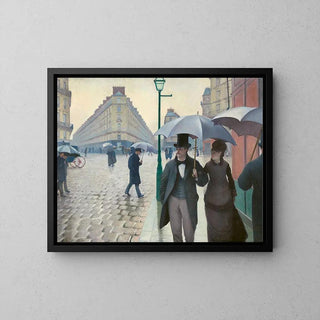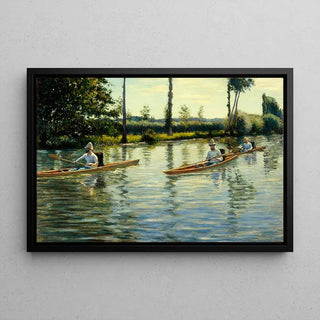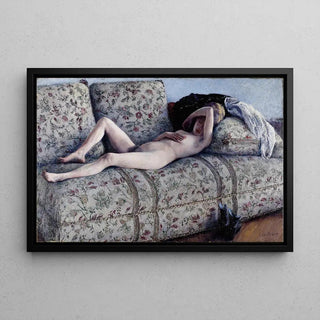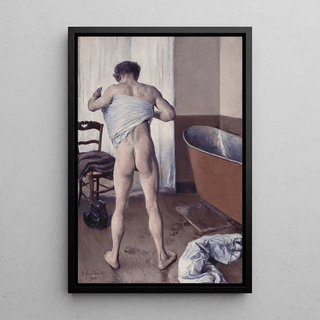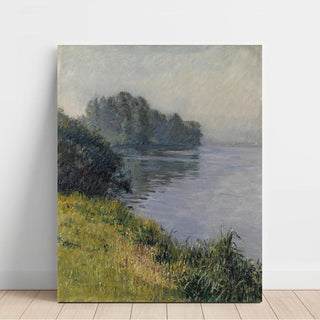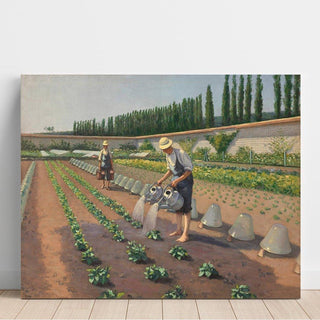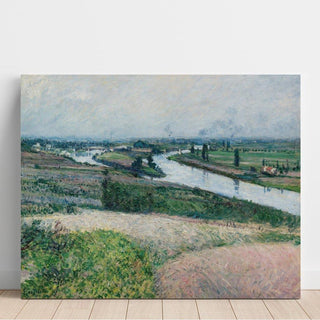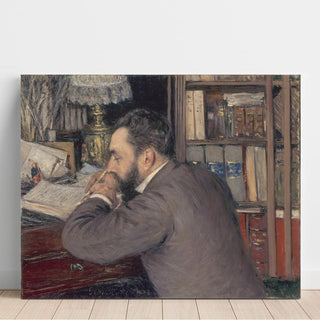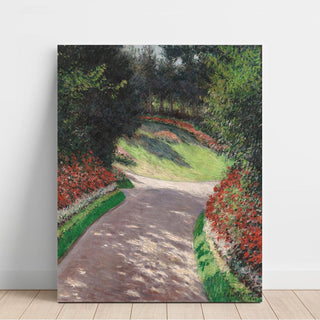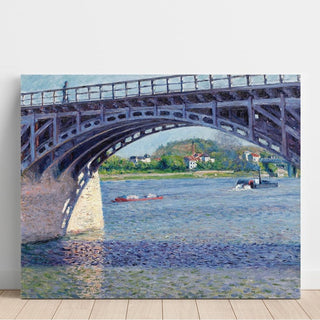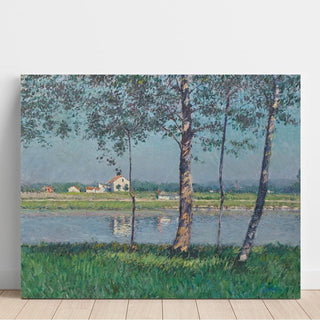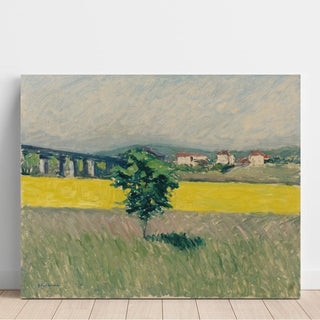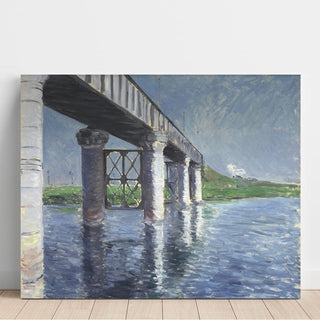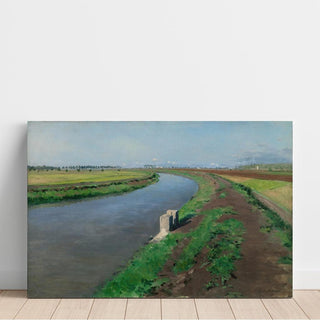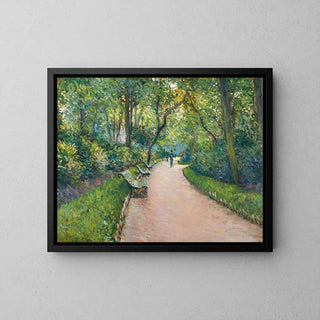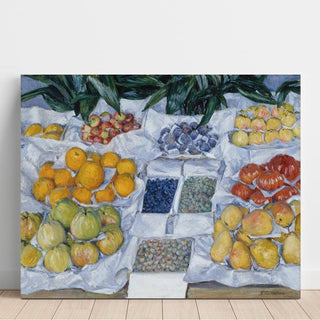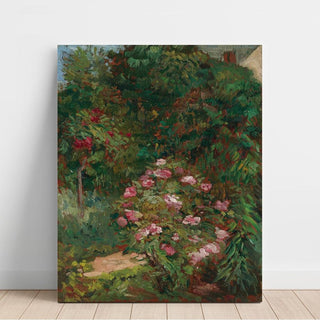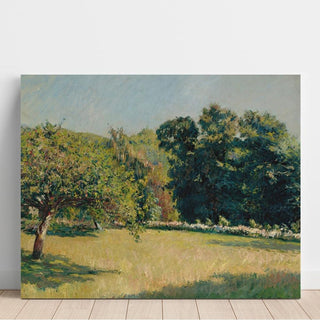Art print Caillebotte: Discover the Emblematic Works of Gustave Caillebotte
Introduction to Gustave Caillebotte: The Journey of a Master of Parisian Impressionism
Gustave Caillebotte, French impressionist artist and painter born in Paris in 1848, quickly became a major figure in modern art. This impressionist artist is distinguished by his unique ability to capture the soul of Parisian modernity through revolutionary urban scenes. Bourgeois security, social contacts, and urban development occupy a central place in the art of Gustave Caillebotte. His initial legal training, marked by in-depth law studies, quickly turned towards oil painting on canvas where Gustave Caillebotte developed a singular and recognizable style.
The works of Gustave Caillebotte show a particular attention to the evolution of French society and the beauty of the modern moment, captured in his emblematic canvases exhibited today in the greatest museums. Caillebotte moved in a bourgeois social and artistic environment, strongly influenced by the impressionist circle and his relationships with other artists and writers, which nourished his work. The influence of his father was decisive in his training and artistic choices, notably through family support and an environment conducive to the flourishing of his talents. It should be noted that Caillebotte was sometimes the only person to support certain impressionist artists, thus demonstrating his personal commitment and determination to promote this movement. His brothers also played an important role in the constitution of collections and in his artistic life, favoring the transmission and sharing of the family heritage. The Franco-Prussian war of 1870 marked a turning point in his life and in the era, influencing society and the art world in which he was involved. Furthermore, Caillebotte's interest in other fields, such as gardening, horticulture, and collecting, enriches the understanding of his artistic and personal profile. His residence in Petit Gennevilliers, where he devoted himself to sailing and his private passions, played an essential role in his personal and artistic life. The art of Gustave Caillebotte reveals a painter passionate about the transformations of Paris and the emergence of French urban modernity. It is also worth recalling that the city of Yerres was a central place in Caillebotte's artistic production, as was the city of Paris, where his exhibitions took place. Gustave Caillebotte stands out as a privileged witness of his time, documenting with precision the social changes of 19th-century France.
Top 8 Most Famous Paintings of Gustave Caillebotte
1. Rue de Paris, Temps de Pluie (1877) - The Work at the Musée d'Orsay
"Rue de Paris, temps de pluie" remains the most famous work exhibited at the Musée d'Orsay, immortalizing a modern Parisian scene in the rain where elegant characters, some wearing top hats, move safely along the Haussmannian boulevards. This painting reveals Caillebotte's art of transforming daily observation into a sophisticated composition charged with urban emotion. This Canvas captures the essence of Parisian modernity and testifies to French artistic genius. The influence of this work on French art remains unmatched in the Musée d'Orsay's collections. Moreover, "Rue de Paris, temps de pluie" was presented at a major impressionist exhibition, which greatly contributed to Caillebotte's public recognition.
2. Les Raboteurs de Parquet (1875) - Oil on Canvas of Social Realism
"Les Raboteurs de parquet" reveals the social dimension of Caillebotte's art, showing workers at work in a bourgeois interior with striking realism. The presence of the wall in the background is noticeable, structuring the scene and accentuating the atmosphere of the enclosed space where the action takes place. This oil on Canvas perfectly illustrates the painter's vision of the working condition and French social evolution. This composition reveals the spirit of France in social mutation, a recurring theme in Caillebotte's impressionist art.
3. Le Pont de l'Europe (1876) - Modern Architecture and Photographic Technique
"Le pont de l'Europe" captures Caillebotte's fascination with modern Parisian architecture, showing the metallic structures of the industrial revolution through an innovative impressionist technique. The bold framing of the composition, with its original angles and marked perspective, highlights the uniqueness of the work and enhances the sensation of realism. This Canvas testifies to his mastery in painting geometric perspectives and light plays on metal. This painting illustrates Caillebotte's art of transforming symbols of modernity into urban visual poetry.
4. Périssoires sur l'Yerres (1878) - Maritime Passion and Impressionism
"Périssoires sur l'Yerres" reveals Gustave Caillebotte's nautical passion at his family estate in Yerres on the Parisian outskirts, showing elegant boats sailing near the water's edge under an impressionist sky. This oil on Canvas captures the peaceful atmosphere of French bourgeois leisure in the idyllic setting of Yerres, where the shore plays a central role in the composition. Gustave Caillebotte transforms the landscapes of Yerres into poetic visions of bourgeois France, revealing his deep attachment to this region. This painting testifies to Gustave Caillebotte's mastery in painting water and luminous reflections, techniques he particularly developed at Yerres.
5. Jeune homme à sa fenêtre (1880) - Parisian Urban Modernity
"Jeune homme à sa fenêtre" illustrates Caillebotte's art of capturing modern urban solitude, showing a figure contemplating Paris from his Haussmannian balcony. This oil on Canvas reveals the painter's fascination with the new spaces of the Parisian bourgeoisie and modern architecture. The painting testifies to Caillebotte's ability to transform a scene of urban intimacy into a meditation on the modern French condition.
6. Canoë sur la rivière Yerres (1877) - Bourgeois Leisure
""Canoë sur la rivière Yerres" captures the bourgeois art of living according to Caillebotte, showing elegant men rowing on the Yerres river. This composition reveals the painter's interest in the new leisure activities of the French bourgeoisie and nautical pleasures. The painting perfectly illustrates Caillebotte's technique in representing water and reflections, as well as his personal passion for sailing.
7. Déjeuner (1876) - Bourgeois Family Intimacy
"Déjeuner" reveals Caillebotte's art of documenting the intimacy of Parisian bourgeois life, showing a family meal scene in a refined interior. This oil on Canvas testifies to the painter's attention to the details of domestic life and the cozy atmosphere of bourgeois homes. The work illustrates Caillebotte's technical mastery in rendering textures and natural light filtering into the interior.
8. Portraits à la Campagne (1876) - Impressionist Elegance
"Portraits à la campagne" captures the elegance of the French bourgeoisie on vacation, showing refined characters in a rural setting. This Canvas reveals Caillebotte's art of painting aristocratic leisure and the French art of living outside Paris. The painting testifies to his ability to adapt his impressionist technique to rural scenes and group portraits.
Major Themes in the Work of Gustave Caillebotte
The Vegetable Garden and Bourgeois Life
Gustave Caillebotte explores in his works the themes of French bourgeois life, including vegetable garden scenes in his property in Yerres. These compositions reveal the art of living of the Parisian bourgeoisie and testify to Gustave Caillebotte's interest in domestic activities. The painter documents with precision the security and comfort of this expanding social class. The landscapes of Yerres and the vegetable garden scenes perfectly illustrate Gustave Caillebotte's art of transforming bourgeois daily life into refined artistic compositions.
Paris and Haussmannian Architecture
Parisian urban planning occupies a prominent place in the art of Gustave Caillebotte. His characters move through the modern boulevards of Paris where urban security and new social contacts redefine contemporary Parisian life. This exploration of Parisian modernity reveals Gustave Caillebotte's fascination with urban evolution and the architectural harmony of the new districts of Paris. The Haussmannian transformations of Paris become under Gustave Caillebotte's brush a true laboratory of social and artistic observation.
The Artistic Evolution of Gustave Caillebotte: Training and Technique
Gustave Caillebotte began with a solid legal education before dedicating himself entirely to oil painting on Canvas. Born into a wealthy Parisian bourgeois family, Gustave Caillebotte developed his fascination with modern architecture and the revolutionary transformations of Paris. Drawing plays a fundamental role in the preparation of his works, notably through sketches and meticulous studies that precede his major compositions. His unique artistic technique blends precise realism and an impressionist vision of contemporary France, establishing Gustave Caillebotte as a major innovator. He is also distinguished by his use of pastel, a technique for which several of his works have received international recognition. His production of pastels, notably in Yerres, as well as his collection of Degas pastels, testify to his interest and mastery of this medium.
Artistic Training and Influences of Gustave Caillebotte
Gustave Caillebotte's training remarkably combines in-depth legal studies and a nascent artistic passion. Gustave Caillebotte attends prestigious Parisian studios where he meets Impressionist masters who will definitively guide his career. This formative period allows Gustave Caillebotte to develop his unique oil painting technique on Canvas and his revolutionary vision of modern urban France. Gustave Caillebotte's law studies provide him with methodological rigor found in the precision of his artistic compositions.
Oil Painting Technique on Canvas
Gustave Caillebotte's technique is characterized by exceptional mastery of oil painting on Canvas and innovative geometric perspectives. The painter Gustave Caillebotte uses rigorous compositions and revolutionary framing inspired by emerging photography. Gustave Caillebotte works his canvases with remarkable precision, creating unique dramatic effects on his oil on Canvas. This particular technique makes Gustave Caillebotte an undisputed master of modern French art, durably influencing the evolution of Impressionist painting.
Buying Guide: Museum-Quality Caillebotte Art Prints
What Quality for Your Caillebotte Art Prints?
Our paintings are made by high-definition printing on premium canvases and museum-quality art paper. Each art print respects the original dimensions and the oil painting technique on Canvas characteristic of Caillebotte. Our collection includes the most representative works exhibited at the Musée d'Orsay.
Available Formats and Dimensions
Depending on the size of your space, choose suitable dimensions: small format 40x60cm, medium format 70x100cm, or large format 100x140cm. These dimensions respect the original proportions of Caillebotte's works. Each size allows harmonious integration into your interior.
Supports and Materials: Canvas and Paper
Our art prints use different supports: traditional Canvas faithful to the originals, high-quality art paper, and printing on various materials. The wooden framing respects the era of the original works and enhances their authenticity. Each product benefits from rigorous quality control.
FAQ on Gustave Caillebotte and his Art
What is Gustave Caillebotte's best-known work?
"Rue de Paris, temps de pluie" (1877) is Caillebotte's most famous work, preserved at the musée d'Orsay. This emblematic painting depicts a Parisian scene in the rain, where elegant figures move safely along the new boulevards. This oil on Canvas captures the essence of Parisian modernity and reveals the painter's genius in transforming an everyday scene into a major artistic composition.
Why was Caillebotte considered a patron?
Caillebotte was an important patron of the impressionist movement, financially supporting his artist friends and collecting their works. His family fortune allowed him to buy the canvases of his contemporaries and organize exhibitions. This role as patron and collector contributes to his recognition in the history of French art.
What technique characterizes Caillebotte's paintings?
Caillebotte's technique is distinguished by his mastery of oil painting on Canvas and his precise geometric compositions. The painter uses innovative framing inspired by photography and rigorous perspectives. His oils on Canvas reveal remarkable technical precision that gives his works their particular modernity.
FAQ on our Caillebotte Art prints Collection
Which paintings by Gustave Caillebotte do you offer?
Our collection includes the emblematic works of Gustave Caillebotte: Rue de Paris temps de pluie, Les Raboteurs de parquet, Le Pont de l'Europe, Voiliers sur l'Yerres, Homme au balcon, Canotiers ramant sur l'Yerres, Déjeuner, Portraits à la campagne, Intérieur femme à la fenêtre, and Jardinier arrosant. Each art print faithfully respects the original dimensions and the characteristic technique of oil painting on Canvas by Gustave Caillebotte. These works by Gustave Caillebotte are available in our permanent collection, offering a wide choice to lovers of French impressionist art.
Do your art prints respect the works of the musée d'Orsay?
Yes, our art prints faithfully draw inspiration from the works of Gustave Caillebotte preserved at the musée d'Orsay and in major international collections. We scrupulously respect the original dimensions, authentic colors, and the specific technique of oil painting on Canvas characteristic of Gustave Caillebotte. Each art print in our collection undergoes strict quality control to guarantee fidelity to the masterpieces exhibited at the musée d'Orsay. Our references page details our collaboration with museum institutions to ensure the authenticity of each Caillebotte art print.
Do you offer different dimensions?
Each painting by Gustave Caillebotte is offered in several carefully selected dimensions to fit all spaces and decorative projects. From small discreet format to large impressive format, you will find the ideal size to showcase Gustave Caillebotte's works. Our specialized page exhaustively details all available dimensions for each work in the collection, allowing customers to make the best choice according to their specific needs. The proposed dimensions respect the original proportions of Gustave Caillebotte's Canvases to preserve the artistic integrity of each composition.
Which support to choose: Canvas or paper?
We offer several supports: traditional Canvas for an authentic rendering, high-quality art paper for a controlled budget, and other materials according to your preferences. Each support respects the original quality of Caillebotte's oil on Canvas.
Where do you manufacture your art prints?
All our prints are made in France, guaranteeing European quality. Each art print benefits from personalized tracking and direct contacts with our teams. Our French production ensures compliance with the highest quality standards.
How to frame a Caillebotte art print?
Our formats are standardized to facilitate framing. We recommend a simple wooden frame to respect the era of the original works. Good framing enhances the art print and creates a harmonious set in your interior.
What are your delivery times?
Our art prints are made to order in 2 to 4 days, then shipped within 2 to 5 days in France. Each product is carefully packaged to arrive in perfect condition. Our customers benefit from personalized tracking of their order.
What to do in case of delivery problems?
In case of damage, immediately contact our teams with an image of the problem. We replace any defective product free of charge. Our customer service handles each request as quickly as possible to ensure your satisfaction.
Discover our complete collection of art prints Caillebotte and transform your interior with French Impressionist art. Each Canvas brings the Parisian elegance of the 19th century into your living space.

